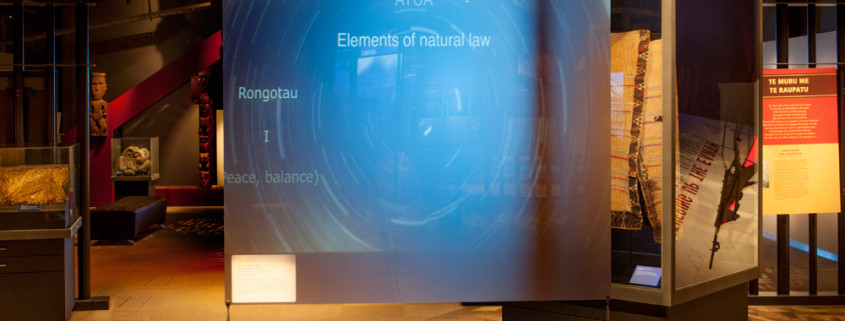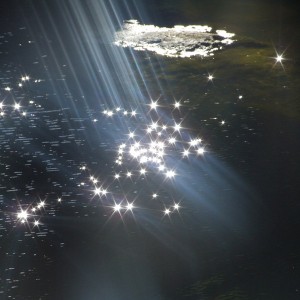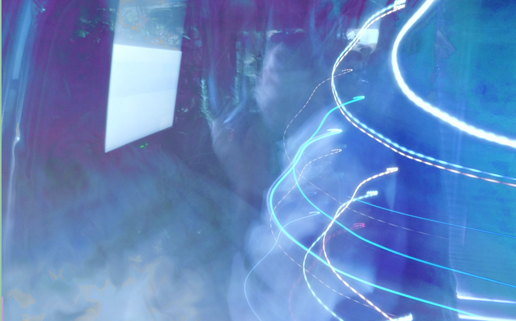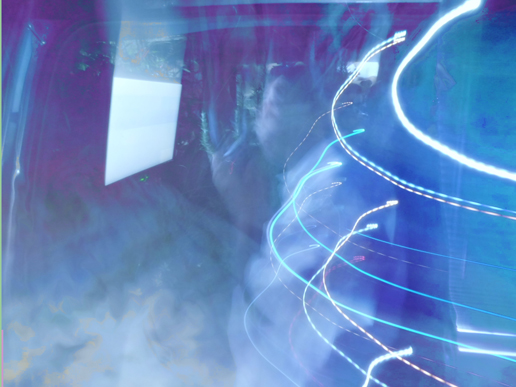Posts
huatoki-walkway3
/in 2015 Locations /by Ian ClothierHuatoki walkway: history unveiled
It is interesting that following a river cuts across the urban city landscape and the corresponding histories of place. Nature and heritage are often obscured when the experience of place is dominated by being in buildings, and walking, taking a bus or driving the streets. To follow a river is to connect them all.

This looks like a collection of boulders, but once was a large marker rock used by local iwi (tribes). It was dynamited in the colonial era

The view looking upward toward the end of the town centre part of the walkway. If needed further sites are located beyond
SCANZ2015:water*peace-call
/in Uncategorised /by Ian ClothierPhoto by Jo Tito
.
Celebrating International Peace Day with a call for projects on Water and Peace
This is the call page for SCANZ2015:water*peace. Below is information about project types, application process and the submission link.
Water is essential to survival, revered and respected worldwide for its power, curative and creative abilities. Water as a resource has become intensely politicised and monetised, in contrast to the view that access to fresh water is a fundamental human right. Peace is also essential to the sustainability of humans on Earth. Join us to discuss and put forward positive, connecting views on water and peace that engages our community. This is the first call for projects and residency with submissions due November 8, 2013 (this allows for planning and fundraising). A second call with revised dates will be issued shortly. Read more about the ideas behind the project…
Project components
Noho marae
SCANZ2015: water*peace will be the fifth SCANZ residency and starts in January 2015. It will commence with noho marae (overnight stay) at Parihaka, world renowned as a site of peaceful protest. The stay coincides with the 18th and 19th, when Te Whiti and Tohu, leaders of the peace movement are celebrated.
Open residency
This will be followed by a two week open, creative and interdisciplinary residency. It is our hope that tangata whenua, indigenous peoples, New Zealanders and other global citizens will be able to take part.
We are suggesting that artists, environmentalists, technologists, scientists, writers, performers, dancers, permaculturalists and people interested in the positive aspects of water and peace, all take part. Anyone can submit a project in one or more of the categories listed further down this page.
Temporary works in public space
We would like to have five to seven temporary works in public space, shown for one day or overnight on the final weekend of the residency. These will be sited along a river walkway. No power will be provided at the sites, so solar, wind, and water powered projects are suitable (battery and static install are two further options).
Day of public activities about water, water quality and peace
We are seeking proposals for a day of activities that engage our local community in issues around water and peace.
Night time building projections
We are seeking projection works about water or peace, to be projected on to the side of a local building in the evening.
SCANZ hui
On the final weekend of the residency there will be a SCANZ hui. Day one is at WITT, the local polytechnic and allows for presentations that require technology, the internet, projectors etc. Day two is a walking symposium to view the artworks and have thematic discussions in the environment of the river walkways.
A separate call for hui/symposium presentations will be made at a later date, through the same application page on Easy Chair.
Categories of projects
Water and/or Peace residency and temporary public work (residency with public exhibition project)
Water and/or Peace residency (residency without an exhibited project)
Water and/or Peace temporary public work (no residency, public exhibition project)
Public activity day project
Night time projection on building
Online exhibition
Pure research
Process
Applicants should download the pdf application form by clicking the link below. This should be filled out and attached to the application made at EasyChair.
IMPORTANT: Fill out the SCANZ application pdf first, then go to Easy Chair and make yourself a log in. After entering your contact information, project title and submission abstract (max 500 words, target 350) with keywords, tick the appropriate category and topic. Upload the completed SCANZ pdf form in the field that says ‘Paper’. In the field that says ‘Attachment’ upload a .pdf, .doc, .docx or .txt which contains a a one page CV and a project image.
A two stage process will be used. Successful applicants will then be able to apply for accommodation and/or food subsidies from Intercreate. It will also be possible to apply for micro budgets for the public event one day of activities and river walkway art works.
This first call for applications is currently closed for review. A second call will be made, and announced via our email list, on Facebook and Twitter.
Submission page and useful links
Background to the project and issues of water and peace.
This short video is made by the people of Parihaka about Parihaka.
Pdf SCANZ2015 Application Form. Right click and download the form, open it in Acrobat and fill it out (Mac users, you cannot use Preview, it has to be Acrobat). Then attach the SCANZ form to your EasyChair submission.
We prefer pdf if possible at this stage. If you do not have Adobe Acrobat, scroll to the bottom of this page and there is a link to a Word file.
The Easy Chair submission page. The url in full is https://www.easychair.org/conferences/?conf=scanz2015
If you do not already have an Easy Chair log in, you will need to get one – the page you go to will prompt you, and once you have activated your account you will go to the SCANZ 2015 link.
Social media
Intercreate is adapting its online communication channels. Here is how to stay informed and tailor the way you connect with us:
Like us on Facebook and receive all Intercreate news & updates on events
Follow us on twitter to engage hybrid, interdisciplinary issues covering: art + technology + science + environment + cultural bridging
Join our Placestories project to share resources & discussion about SCANZ 2015 Water * Peace
Being Light
/in Car Garden, Other projects, Wai /by Ian ClothierBeing Light: a festival of light and ideas explores ideas about light across Maori, Navajo, Mayan, Pueblo and Western European culture. The festival has two parts, activities in the day with stalls and market; while in the night there are outdoor projections on the side of buildings. Attendance is free.
We live in a time where there is great interest in bringing together indigenous and Western cultures, art, science and technology. Currently involved are: Patricio Dominguez, Ian Clothier, Mike Andrews, Mike Sutherland, Issa Malluf, Agnes Chavez, Tom Greenbaum, Jamila Colozzi, Courtni Hale, Glenn Parry, Enrique Hynes, Julia Pyatt, Sandra Wasko-Flood and Susan Caffrey.
Te Huirangi Waikerepuru, Te Urutahi Waikerepuru (of Aotearoa New Zealand), Will Wilson and Richard Lowenstein have expressed interest. We are in contact with Santa Clara Pueblo and have invited Mayan participation.
At night, artworks are projected onto the exterior of buildings. The projections consist of a programmed selection of:
• projection works by leading artists
• visualization of energy data from humans
• audio works and music themed on light
• sculptures that use light are installed outdoors at night
During the day, the festival includes
• the creation of an energy labyrinth as a participatory art work in both construction and then walking the labyrinth. Activities include instructions on how to turn your phone into an electromagnetic field reader
• videos where shamans and senior representatives of cultural groups are paired with video students, to make short videos that reflect beliefs about light
• solar powered art works
• visualizations and sonifications of light energy
• activities and market stalls themed on light and sun in the day time
• sunflower painting for children; knowledge sharing of indigenous knowledge about growing sunflowers
• stories of the sun and the power of the sun
• solar powered objects and artefacts
• scientific stalls that express the Western science view of light – wave particle duality
• information stands expressing cultural viewpoints on light
• music themed on light
Exhibitions + Projects
/in News /by Ian Clothier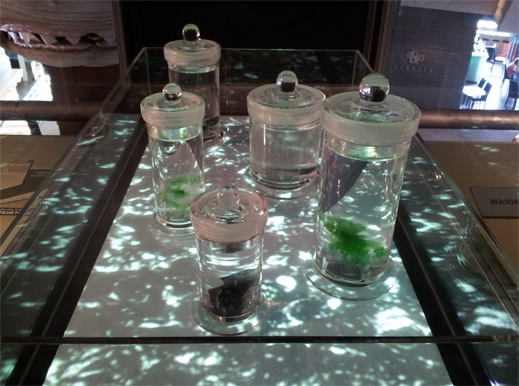
Iwasaki, Hideo cultures cyanobacteria which then photosynthesise according to the light of the moving image work projected from below (from the 3rd nature exhibition
Intercreate.org projects and exhibitions
This page has introductory information about Intercreate.org projects, which include our biennial project SCANZ, exhibitions in Albuquerque, Istanbul, Rio and in Aotearoa New Zealand.
Upcoming
We are currently working on exhibition projects for Sydney, Albuquerque and Taos and Nga Motu New Plymouth. SCANZ 2015 will be themed Wai (water) and Peace, two significant issues facing humanity.
SCANZ 2013: 3rd nature exhibition

‘The electromagnetic sensory world of sharks’ by Mike Paulin, a Zoologist was projected onto the mesh of a ‘sail’, in the galleries which houses traditonal Maori artefacts.
3rd nature at Puke Ariki integrated museum and library. To see works in the 3rd natureshow, click the image above.
Wai (for ISEA 2012 Albuquerque)

Te Urutahi Waikerepuru, Dine’/Navajo musician Andrew Thomas and his partner, Te Huirangi Waikerepuru, myself, Johnson Dennison, Gordon Bronitsky and Rosemary Dennison just before the ceremonies started.
Water is essential for life, sacred to many indigenous peoples worldwide and endemic to natural processes. This project connects Maori cosmology, notions of integrated systems, Western art and science in order to reinvigorate our understanding of flow and water. The project reiterates the urgent need to engage with sustainable practices given climate change. It also underlines the importance of listening to the indigenous voice on the environment.
The Wai (Maori for water or flow) project uses technology to connect distant spaces and cultures around the theme of water. Water holds significance for Maori of New Zealand Aotearoa, Navajo/Dine in New Mexico and neighboring regions, and is essential to survival. Isleta Pueblo, Navajo/Dine and Maori ceremonies will be performed as part of the dawn opening for the exhibition.
The project is led by Te Huirangi Waikerepuru and curated by Ian Clothier. It will open September 19th at 516 Arts in Albuquerque. A collective of people spanning four countries and many cultures – Aotearoa New Zealand, USA, Australia, India and representatives of indigenous peoples -are presenting an interconnected project. The collective is known as Te Hunga Wai Tapu (the people for whom water is sacred).
For more information about Wai, check Wai exhibition and Wai participants.
Te Kore Rongo Hungaora Uncontainable Second Nature
Te Kore Rongo Hungaora Uncontainable Second Nature was a project of ISEA 2011 Istanbul. A travelling version has since been formed, for exhibition in Rio de Janeiro.
The exhibition crosses cultural and discipline boundaries. The location of five themes from within European and Maori world views, provides a framework with which to construct a cultural bridge between Maori and European of New Zealand. Culture is usually presented separated and distinct; given the intercultural bridge, works from art and science are recontextualised as cultural texts symbolic of belief systems. Discipline is not fixed, but fluid in a transformational environment. In the exhibition, digital and post-digital exist in a state of hybridity.
Curated by Ian Clothier with an advisory panel of Nina Czegledy, Trudy Lane and Tengaruru Wineera, for ISEA 2011 Istanbul. Supported by:
Exhibited works
Please see here for a list of all the projects involved in the exhibition »
Exhibition Venues
Event: ISEA 2011 UNCONTAINABLE
Venue: Cumhuriyet Art Gallery, Istanbul, Turkey
Dates: September 14th – October 12th, 2011
Exhibition Page: Uncontainable: Second Nature
Related Event: Eco sapiens Round Table
Event: CulturaDigital.Br International Festival
Venue: Rio de Janeiro, Brazil
Dates: December 2nd–4th, 2011
Exhibition Page: Rongo Hungaora: Second Nature [Travelling]
inter / place
The works in the exhibition inter/place present an attempt to come to grips in some way with the notion of multiplicity and a sense of distributed identity. Rather than gather all the artworks up in one area and present them as a selection of works on one theme, the artists taking part in this exhibition have been free to create their own work and explore different exhibition locations for that work. Subsequently none of these works have been placed in the conventional sites for exhibitions in Puke Ariki museum. There is no claim to novelty in this approach but rather the determination that a view based on distributed and multiple identity has been hybridised to the Puke Ariki location.
Venue
Puke Ariki – three works in the museum section and one in the library.
Date: December 2 2010 – February 3 2011.
A link to the catalogue is provided below.
Like us on Facebook
Follow us on Twitter
One Man is an Island – Rachael Rakena
/in Second Nature Exhibition /by Ian Clothier
One Man is an Island, 2009, Rachael Rakena (Iwi – Ngai Tahu, Nga Puhi), High definition video, courtesy of Bartley and Company Art, Wellington
Uncontainable-second-nature
/2 Comments/in Featured, Second Nature /by Trudy LaneUncontainable-second-nature (Te Kore-Rongo-Hungaora)is curated by Ian Clothier with an advisory panel of Nina Czegledy, Trudy Lane and Tengaruru Wineera, for ISEA 2011 Istanbul. The exhibition crosses cultural and discipline boundaries. A cultural bridge has been constructed, providing a framework of both Maori and European knowledge. Five themes from within European and Maori world views were located.
Given the intercultural bridge, works from art and science are recontextualised as cultural texts symbolic of belief systems. Discipline is not fixed, but fluid in a transformational environment. In the exhibition, digital and post-digital exist in a state of hybridity.
Included are works by Julian Oliver, recipient of the Golden Nica at Prix Ars Electronica in 2011, Lisa Reihana, Julian Priest, Sonja van Kerkhoff, Sophie Jerram and Dugal McKinnon, Rachel Rakena, Jo Tito, Associate Professor Mike Paulin (Zoology), Paul Moss and Te Huirangi Waikerepuru.
The show opened at Dawn on September 14th at Cumhuriyet Art Gallery Taksim Square Istanbul and ran to October 12th as part of ISEA 2011 Istanbul.
Below are a few photos of some of the works, to remind people of the show. These are just some quick point and shoot images, further formal documentation will be added later.

Te Huirangi Waikerepuru stands before his chart of Te Taiao Maori – the backbone of the project

The psworld computer by Julian Oliver

Jo Tito’s kohatu (stone) Mauri Wai Mauri Ora between speakers playing breathing audio by Sophie Jerram and Dugal McKinnon

An image from Whanaunga by Lisa Reihana

Paul Moss’s Photo Astronomy images were embedded into star shapes, and the stars placed on the floor in the formation of the Southern Cross

Looking through to the second space, with part of Julian Priest’s Information comes from the sun on the cylindrical plinth and the exterior of Kāinga a roto Home within by Sonja van Kerkhoff, Sen McGlinn and Toroa Pohatu in the background.

Mike Paulin’s Computational Visualization of the Electromagnetic Sensory World of Sharks.

Julian Priest’s Information comes from the sun

One man is an island by Rachel Rakena

Looking from beside Kāinga a roto Home within toward works by Julian Priest (right) Mike Paulin and Rachel Rakena
Curatorial statement for Te Kore Rongo Hungaora – Second Nature
/in Featured, Second Nature, Second Nature Exhibition /by Ian Clothier
Curated by Ian Clothier with an advisory panel of Nina Czegledy, Tengaruru Wineera and Trudy Lane, a bridge between Maori and European cultures of Aotearoa New Zealand has been constructed. The cultural bridge interconnects both Maori and European knowledge at the level of summary. Five themes from within European and Maori world views were located.
Given the intercultural bridge, works from art and science are recontextualised as cultural texts symbolic of belief systems. Discipline is not viewed as fixed, but fluid in a transformational environment. In the exhibition, digital and post-digital exist in a state of hybridity.
The project began with the selection of concepts shared across ideological borders. The topics were loosely connected and include cosmological context, all is energy, life emerged from water, anthropic principle and integrated systems. All the selected works address more than one of these thematic regions.
Discipline boundaries were breached, following a course charted at SCANZ 2011: Eco sapiens where artists, scientists, environmentalists, activists, educationalists, philosophers and tangata whenua came together to collectively re-imagine our narratives on nature. In this way the event sought to encourage cultural shifts in response to the environmental crisis facing earth and humanity.
Breaching boundaries of culture and discipline, generating cultural hybridity and interdisciplinarity has consequences. There are gains and losses in the approach, but what might be won is a way forward that is sustainable, affirmative and interconnected. One sense of the term ‘culture’ refers to customary practice or a way of thinking, while one sense of ‘discipline’ is method – in these senses of those words, the works here arise from a culture of sharing and a discipline of openness.
Curator – Ian Clothier CV and bio
Ian Clothier is Director of Intercreate Research Centre (intercreate.org) and Founder and Co-director of SCANZ residency, symposium and exhibition. As an artist his projects intersect art, technology, science and culture. Recent creative projects include the integrated systems The Park Speaks and Haiku robots; and the hybrid cultural Making History a project of his internet micronation The District of Leistavia. He has had thirteen solo shows and been selected for exhibition at institutions in twelve countries including three ISEA exhibitions: ISEA 2009 Belfast exhibition; Taranaki culture at Puke Ariki, New Zealand; ISEA 2008 Singapore symposium; net.NET at The JavaMuseum; for Finger Lakes Environmental Film Festival in the USA (upstate New York); ISEA 2006 San Jose exhibition; Graphite at the University of Otago NZ; the First International Festival of Electronic Art in Rio de Janeiro; Fair Assembly at ZKM; New Forms Festival in Vancouver; ISEA 2004 Tallinn/Helsinki exhibition; ReJoyce in Dublin and Wild 2002 in the Tasmanian Museum. He was awarded a Converge Artist Fellowship at the University of Canterbury in 2005 for an augmented reality project. Written work has been published in respected journals, Leonardo, Convergence and Digital Creativity and he has delivered papers to conferences and symposia worldwide.
Curatorial experience includes being selection panel member for Solar Circuit Aotearoa New Zealand 2006; SCANZ 2009: Raranga Tangata; SCANZ 2011: Eco sapiens; Inter:place at Puke Ariki 2010; WITT-wide an exhibition covering work by staff of all departments of Taranaki’s polytechnic in 2009; Interactive City selection panel for ISEA 2006; Exhibitions, Policy and Education Officer, The Gallery Akaroa 1990 – 1992; Co-director of Summer Entertainment in Akaroa 1986; and Exhibition Officer 1984-86 at the Gallery Akaroa.
As well as curatorial panel membership he also produced and creatively directed the SCANZ events with Trudy Lane. Previously he had been Special Projects Manager at the University of Auckland Business School (managing world class teaching technology installations 1997-2002), and Survey Manager for Halcrow Fox Associates in the UK 1988-1990). In 2002 he was awarded and MA (Hons) from AUT, and has a Diploma of Art in Visual Arts from Monash University Gippsland Campus.
Research Publications
Clothier, I (2009). The Collaborative Landscape: some insights into current practice in the visual arts ITPQ refereed conference proceedings.
Clothier, I (2008). Leonardo, nonlinearity and integrated systems in Leonardo Volume 41 Number 1 pp. 49-55.
Clothier, I. & Lane, T. (2008). Solar Circuit Aotearoa New Zealand in S. Brennan & S. Ballard (Eds.) The Aotearoa Digital Arts Reader. Auckland: Clouds.
Clothier, I. & Lane, T. (2008). SCANZ. New Plymouth: Intercreate Press. ISBN 978-0-473-13388-7.
Clothier, I. (2007). Formen der Reprasentation: Hybride Kulturen, Nonlinearitat und creative Verfahren (Forms of Representation: Hybrid Culture, Nonlinearity and Creative Practice). In Kroncke, M; Mey, K & Spielmann, Y. (Eds.) Kultureller Umbau: Räume, Identitäten, Re/Präsentationen (Cultural Reconstruction: Spaces, Identities, Re/Presentations). Bielefeld: Transcript. ISBN 978-3-89942-556-7.
Clothier, I (2007). Created identities: hybrid cultures and the internet (revised with images) at http://www.hz-journal.org/n11/clothier.html
Clothier, I. (2007). Art.data/branching. New Plymouth: Intercreate Press. ISBN 978-0-473-11915-7.
Clothier, I. (2005). Created identities: hybrid cultures and the internet in Convergence Volume 11 Number 4 p 44-59; London, Thousand Oaks and New Delhi:Sage Publications
Clothier, I. (2003). Hybrid cultures: what, where and how about us? Nga Waka, Aotearoa NZ Association of Art Educators Conference published in Nga Waka, ANZAAE refereed conference proceedings, Vol. One (1),2003
Clothier, I. (2001). From chaos and cosmology: a new space for the visual arts in Digital Creativity Volume 12 no. 1, p 31-44.

